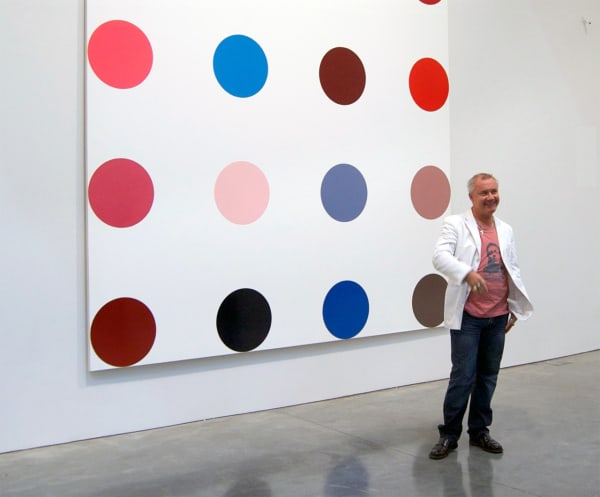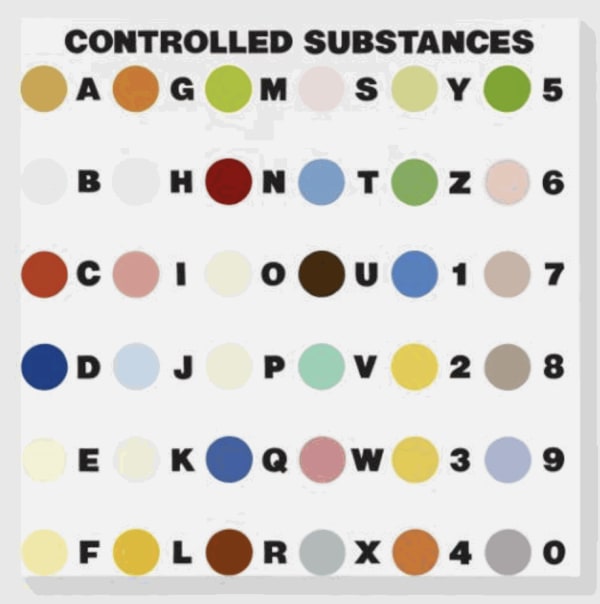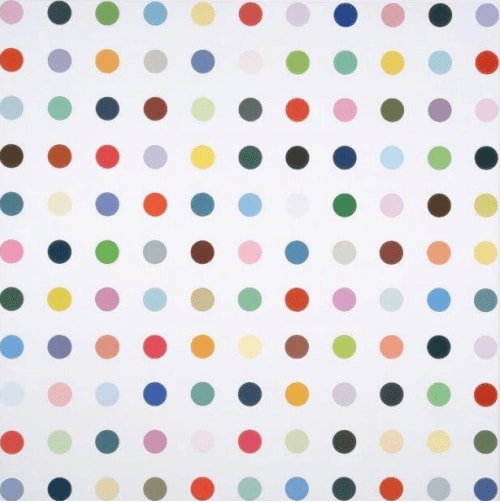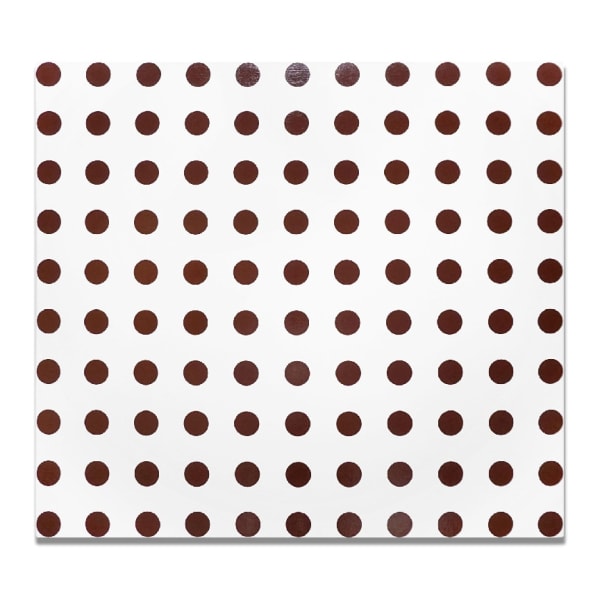Damien Hirst Spot Paintings - An Investment Analysis
Investment Analysis
In the vibrant tableau of contemporary art, few motifs have sparked as much fascination and debate as Damien Hirst's spot paintings. These works, characterized by their seemingly simple arrangement of colored spots evenly spaced out against stark white backgrounds, encapsulate a pivotal moment in late 20th and early 21st-century art. As an art historian delving into the complexities of Hirst's oeuvre, the spot paintings present an intriguing study of minimalism, conceptual art, and the artist's philosophical inquiry into the nature of art itself.
Hirst's spot paintings, which he began in the late 1980s, are part of his broader exploration of themes surrounding life, death, science, and beauty. The paintings vary significantly in size and color palette, but all adhere to the same basic principle: no color is repeated within a single piece. This uniformity and repetition question the role of the artist's hand in the creation of art and the conceptual versus aesthetic value of an artwork. Hirst's engagement with these questions is central to understanding the spot paintings' place within contemporary art discourse.
From an investment perspective, Hirst's works have commanded attention in the art market for their boldness and the artist's celebrity status. The spot paintings, in particular, have shown remarkable investment potential. Notable auctions of Hirst's work include the 2008 Sotheby's auction, "Beautiful Inside My Head Forever," where Hirst bypassed traditional galleries to sell his work directly through auction, fetching unprecedented prices for contemporary art at the time. This sale, which included several spot paintings, underscored Hirst's market savvy and his ability to generate significant financial interest in his work.
Moreover, Hirst's spot paintings have continued to perform well at auctions around the globe, reflecting the sustained interest in his exploration of color, form, and the boundaries of conceptual art. For instance, individual spot paintings have fetched prices ranging from hundreds of thousands to over a million dollars at major auction houses like Christie's and Phillips. These sales highlight not only the financial value of Hirst's work but also the critical acclaim and public interest that have surrounded the spot paintings since their inception.
The investment potential of Damien Hirst's spot paintings lies not only in their aesthetic appeal but also in their conceptual depth. Hirst, as a leading figure of the Young British Artists (YBAs) movement, has played a crucial role in shaping the trajectory of contemporary art. His spot paintings, with their meditative quality and engagement with the scientific and philosophical underpinnings of modern existence, offer collectors and investors a piece of art history that continues to resonate with contemporary themes and challenges.
In conclusion, Damien Hirst's spot paintings represent a confluence of artistic innovation, market influence, and conceptual exploration. For collectors and investors, these works offer the opportunity to engage with a pivotal moment in contemporary art history and to invest in a piece of Hirst's legacy. As the art market continues to evolve, the spot paintings stand as a testament to Hirst's enduring relevance and the dynamic interplay between art's aesthetic, conceptual, and financial dimensions.
February 5, 2024
-
SELECTED SPORT PAINTINGS BY DAMIEN HIRST
-
 Damien Hirst, Diacetoxyscirpenol, 2005
Damien Hirst, Diacetoxyscirpenol, 2005 -
 Damien Hirst, Acetic Anhydride (Blue Dots), 2007
Damien Hirst, Acetic Anhydride (Blue Dots), 2007 -
 Damien Hirst, Arachidyl Alchohol, 2014
Damien Hirst, Arachidyl Alchohol, 2014 -
 Damien Hirst, 4-Fluoro-3-Nitrotoluene, 2005
Damien Hirst, 4-Fluoro-3-Nitrotoluene, 2005 -
 Damien Hirst, Dicaproin, 2007
Damien Hirst, Dicaproin, 2007 -
 Damien Hirst, Direct Orange 31, 2003
Damien Hirst, Direct Orange 31, 2003 -
 Damien Hirst, Hydroquinone, 2016
Damien Hirst, Hydroquinone, 2016 -
 Damien Hirst, Rundelin Sulphate-14, 2002
Damien Hirst, Rundelin Sulphate-14, 2002 -
 Damien Hirst, Tributyrin, 2007
Damien Hirst, Tributyrin, 2007 -
 Damien Hirst, Tricaprylin, 2007
Damien Hirst, Tricaprylin, 2007
-














